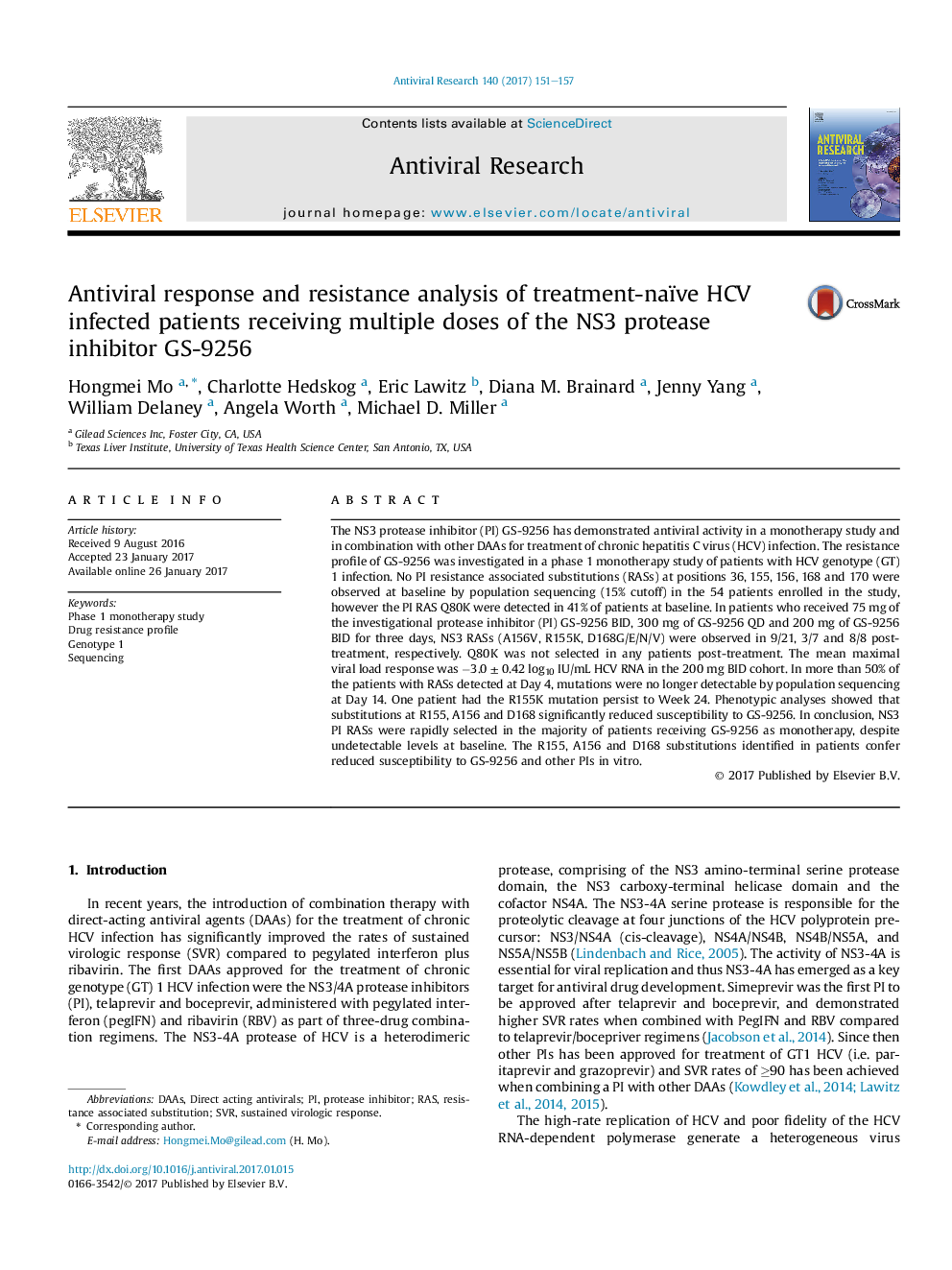| کد مقاله | کد نشریه | سال انتشار | مقاله انگلیسی | نسخه تمام متن |
|---|---|---|---|---|
| 5551834 | 1557803 | 2017 | 7 صفحه PDF | دانلود رایگان |

- The NS3 protease inhibitor (PI) GS-9256 has documented antiviral activity in patients with hepatitis C virus infection.
- The resistance profile of GS-9256 in a phase 1 three day monotherapy dose escalating study was characterized.
- R155K, A156V and D168E/G/V were rapidly selected in the majority of patients, despite undetectable levels at baseline.
- R155K, A156V and D168E/G/V confer reduced susceptibility to GS-9256 and other protease inhibitors.
- PI resistance associated substitutions declined over time but R155K persisted in one patient through Week 24 post-treatment.
The NS3 protease inhibitor (PI) GS-9256 has demonstrated antiviral activity in a monotherapy study and in combination with other DAAs for treatment of chronic hepatitis C virus (HCV) infection. The resistance profile of GS-9256 was investigated in a phase 1 monotherapy study of patients with HCV genotype (GT) 1 infection. No PI resistance associated substitutions (RASs) at positions 36, 155, 156, 168 and 170 were observed at baseline by population sequencing (15% cutoff) in the 54 patients enrolled in the study, however the PI RAS Q80K were detected in 41% of patients at baseline. In patients who received 75 mg of the investigational protease inhibitor (PI) GS-9256 BID, 300 mg of GS-9256 QD and 200 mg of GS-9256 BID for three days, NS3 RASs (A156V, R155K, D168G/E/N/V) were observed in 9/21, 3/7 and 8/8 post-treatment, respectively. Q80K was not selected in any patients post-treatment. The mean maximal viral load response was â3.0 ± 0.42 log10 IU/mL HCV RNA in the 200 mg BID cohort. In more than 50% of the patients with RASs detected at Day 4, mutations were no longer detectable by population sequencing at Day 14. One patient had the R155K mutation persist to Week 24. Phenotypic analyses showed that substitutions at R155, A156 and D168 significantly reduced susceptibility to GS-9256. In conclusion, NS3 PI RASs were rapidly selected in the majority of patients receiving GS-9256 as monotherapy, despite undetectable levels at baseline. The R155, A156 and D168 substitutions identified in patients confer reduced susceptibility to GS-9256 and other PIs in vitro.
Journal: Antiviral Research - Volume 140, April 2017, Pages 151-157